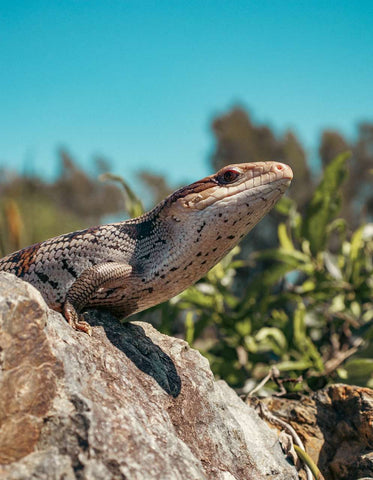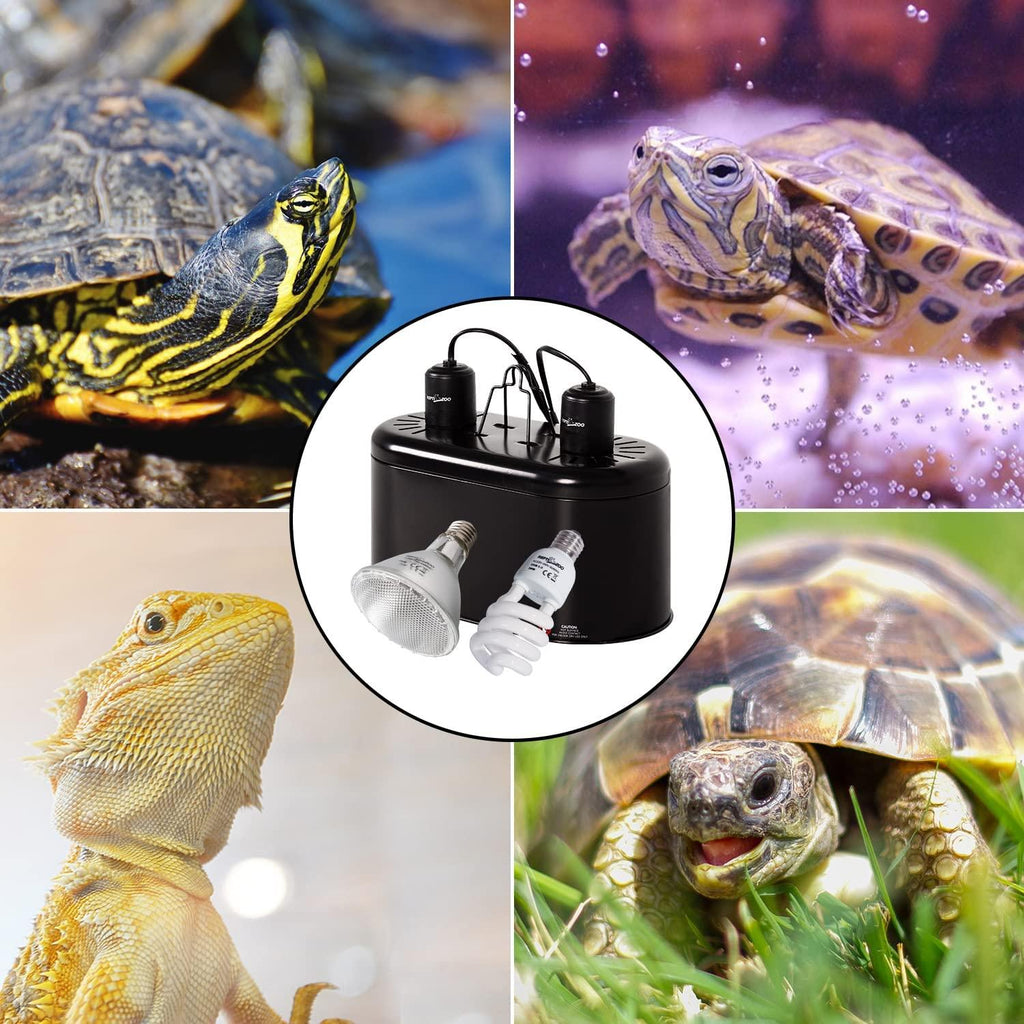Blue-Tongued Skink Care Guide, in the vast world of animal kingdom. There are only few creatures that capture our attention as vividly as the blue tongued skink. With their intriguing behaviors, striking appearance, and unique characteristics, Blue tongued skink are a captivating subject of study and admiration. They have a very unique characteristic their blue tongue that they use to scare the predators away. However, their blue tongued skink does not match with rest of their body color that is a blend of gray and brown colors. Blue tongued skink is a long lizard so you should keep in mind that you need a good amount of space and time for these reptiles. Here in this blog we will discuss in detail about the care requirement of blue tongued skink.
ORIGINS AND CLASSIFICATION
Blue-tongued skink scientifically belongs to the genus Tiliqua that is a large group lizard basically present in Australia, Indonesia, Tasmania, and New Guinea. These skinks are a part of Scincidae family that is a diverse group of skink includes over 15000 species worldwide. In the Tiliqua genus there are different recognized species that have many unique characteristics and distributions. In the case of Blue tongued skink they have a blue tongue that set them apart from all other reptiles and act as defense mechanism for them.
BLUE-TONGUED SKINK PHYSICAL CHARACTERISTICS
The hatchlings of these skinks are very small in size with 4 inches in length and a weight of about half an ounce. They took three years to get mature and they will measure to a size of 13 inches in length and weigh about 450 grams. They have a distinctive appearance of short legs, stout body and a relatively large head. Their scales are shinny and smooth and vary in color and pattern ranging from shades of gray, brown, black and vibrant hues of red, orange and even pink. These colors helps them making a camouflage and blending in to the environment to avoid predators.
BLUE TONGUED SKINK CARE GUIDE
In their natural habitat, these skinks live and thrive in the shrub filled landscapes and deserts. Their daily routine includes concealing themselves beneath the fallen logs or sands. Given the humid and warm conditions of regions like New Guinea and Australia these reptiles will require the hiding spots to seek refuge from intense heat.
Blue-Tongued Skink Care Guide ENCLOSURE
Full grown blue tongue skinks are adapted to a life on land and they must have access of at least 8sq ft of horizontal space to move around. However it is important to provide them larger enclosures. Vertical spaces are not a matter of concern for these lizards but they need a depth of 2 feet. Young skinks can easily live in small enclosures because larger space may cause stress to them. The blue tongue skin enclosure must be in between 40 gallons to 60 gallons in size.
Certainly when your blue tongued skink grows you might need a larger space for them when they get mature. Make sure that blue tongued skink enclosure is well ventilated and equipped with a robust mesh lid capable of supporting heating and lighting fixtures. Securing the lid with the lock is also very important because skinks are great escape artists and never miss opportunity to get out.

SUBSTRATE
Just like other reptiles, it is advised not to use mineral or shredded organic substrates for the blue tongue skink enclosure. These substrates can promote bacterial growth, harbor parasites and elevate humidity levels beyond the optimum range, causes irritation of mucous membrane and also causes an increased risk of respiratory ailments that leads to a potential life threatening conditions. To make sure you get the best environment for your skink always use substrate like flat paper towels, Repti carpet, or brown paper. It’s important to not use substrate that can pose hazards. Skinks naturally love to burrow, so always give them a safe opportunity to get engage in this natural behavior.
LIGHT AND TEMPERATURE
Blue-tongued skinks need ambient temperatures ranges between 75-85°F, with a designated basking spot of temperature between 90-95°F. Creating a temperature gradient that your skinks like is crucial it best to maintain temperature, spanning from mid-70s at the cooler end to mid-80s at the warmer end. This temperature range helps the skinks to regulate their body temperature easily. Although the temperature at night will drop down to 70°F and its completely acceptable.
To make sure that the temperature is properly maintained, put thermometers at the both ends of the enclosure, you can employ heat producing bulbs or ceramic heat emitters. Another important aspect of blue tongued skink is to give them 12 hours of UVA and UVB light. Make sure you replace these bulbs every six months. However, there are certain cautions that should be kept in mind regarding to heating sources, never use “heat caves” or “hot rocks” as well as heat tapes or under tank heaters because they can cause severe burns on the skink skin if they get in close contact. So always put the heating bulbs out of their reach. Blue-Tongued Skink Care Guide

Blue-tongued skinks, Like other sun loving reptiles like monitor lizards and bearded dragons, require a considerable amount of light in captivity. Achieve this by using bulb of 80-100W.
Many type of blue tongued skinks like different type of humidity levels ranging from 25% to 45%. So measure the humidity level with the help of hygrometer. You can also provide localized area of high humidity by using sphagnum moss or paper towels it will be a lot of help in high shedding periods.
NUTRITIONAL REQUIREMENTS
In their wild habitat, blue tongued skinks shows omnivorous behavior. Their tongue helps them in both detecting food and hunting. When they locate their prey these skinks uses their tough jaws to capture insects, small lizards, snails, flowers, grubs and different type of vegetables and fruits. Normally blue tongued skinks stay close to their sheltered areas and move out occasionally to feed. They have a natural tendency to feed at different times especially during day time. Their diet must consist of plant based and animal based foods.
In the early stage of their life, hatchling gets their energy and nourishment from egg yolk. This yolk gets absorbed in their body and this helps them live in their early days of life after birth. Once this yolk is gone, young babies start searching for their food on their own, at this time they transition in to the adult diet.
In the enclosure blue tongue skinks get their protein from crickets, pinky mice, mealworms, chicken or turkey. If you want to give them live food than provide small mice or insects occasionally. To make sure that their diet is well balanced it is recommended to add a variety of vegetables and fruits in their like turnips and collard greens in their diet. Naturally they get their vitamin D3 from licking rocks but in captivity you need to give them vitamin supplements. Most owners believe that if they give them high quality diet there is no need of supplements but it is advisable to provide supplements.
In order to create a healthy environment, remove any kind of uneaten food after every two days. Similarly a small bowl full of water should always be present in the enclosure.
Blue-Tongued Skink Care Guide CLEANING
Always perform regular cleaning in their enclosure it is important to clean and maintain a healthy environment for blue tongue skinks. Make sure to do spot cleaning every other day and make sure to remove left over food, old substrate and feces.
The deep cleaning of the tank should be done once in a month during which the whole tank should be thoroughly cleaned and the substrates are completely replaced. If you neglect the cleanliness it would potentially lead to bigger health problem for your skink.
The feces of blue tongued skink tell a lot about their health, healthy skink feces must be elongated, solid and fully digested. If your skink is suffering from any kind of health issues, it might pass undigested food material. It’s important to keep their enclosure clean and monitoring their digestive health is very important for their overall well-being.
BLUE TONGUE SKINK BEHAVIOR
Among all skink species, blue-tongued skinks stand out as the most sought-after pets due to their captivating hues and engaging behaviors. These lizards are typically amiable, and some individuals actively seek out human interaction. If you’re keen on establishing regular physical engagement with your blue-tongued companion, aim to handle them multiple times a week. This practice assists your pet in acclimating to your presence and gradually growing more comfortable with being held. Always approach your lizard slowly from a side where it can see you. Abrupt movements or attempting to pick it up from above might intensify, rather than alleviate, any fear it has of you. Blue-Tongued Skink Care Guide
When blue-tongued skinks feel disturbed or threatened, they exhibit distinctive behaviors to convey their distress. They have the tendency to inflate their bodies, extend their blue tongues, and emit loud hissing sounds.
This defensive display might occur not only when they are directly disturbed but also when they are engaged in the search for food.
Blue-tongued skinks possess the remarkable ability to shed their tails if they perceive a threat. Apart from this defensive trait, they generally maintain a docile and peaceful demeanor.
WHAT ARE SOME HEALTH PROBLEMS THAT BLUE TONGUE SKINKS CAN SUFFER FROM?
Ensuring your skink’s well-being should be your utmost concern, guaranteeing it a fulfilling and contented life under your care. Blue-Tongued Skink Care Guide
Here are several prevalent disorders that blue-tongued skink owners should be vigilant about:
- Nutritional secondary hyperparathyroidism (“metabolic bone disease”)
- Respiratory infections
- Abnormal or incomplete shedding
- Fungal skin infections
- Thermal burns due to improper heat sources
- Bite wounds from other skinks, especially if cohabiting, or from prey items
- Parasites, either internal or external
- Stomatitis or “mouth rot”
- Obesity
HOW TO KEEP BLUE TONGUE SKINKS HEALTHY?
To ensure that blue-tongued skinks remain comfortable with human interaction, regular handling is recommended. Despite their vibrant blue tongues, it’s important to note that they are neither poisonous nor venomous. Practicing good hygiene is essential. Always remember to wash your hands before and after handling them to maintain their health.
Blue-Tongued Skink Care Guide undergo shedding, a natural process that they can manage with minimal human intervention. While they don’t require bathing during this period, it’s necessary to clean their enclosure once their shedding is complete. This ensures their environment remains sanitary and conducive to their well-being.
